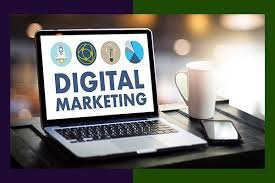Introduction:
Online marketing has changed the face of business communication with potential customers. In this generation, internet penetration has become a necessity and businesses at every level take on online advertising as an effective promotion medium for their goods and services. This handbook will provide you with a comprehensive overview of online advertising, encompassing its different kinds, advantages, and drawbacks, as well as some best practices.
What is Online Advertising?
Is a medium that utilizes the internet as a source of product or service promotion to an intended target audience. It incorporates several techniques, from search engine advertising to display advertising, social media advertising, email marketing, video advertising, and so much more.
Benefits of Online Advertising:
Higher Reach: allows you to reach a global audience, cross geographical boundaries, and make your brand access mi

llions of potential customers.
Measurable Results: Analytics tools help in making data-driven decisions that optimize ads performance, hence producing desirable campaign results.
Cost-Effectiveness: Online advertising is said to produce a high return on investment; in other words, a better ROI than most traditional forms of advertising, which ensures that money is spent in the right places.
Types of Online Advertising:
Search Engine Advertising (SEA)
SEA uses keyword bidding to place ads on SERPs (search engine results pages).
Your advertisement will appear on top of or bottom of the search result of the keyword a user is searching.
PPC-or (Pay-Per-Click) is maybe one of the most popular models that are being undertaken in SEA, where you pay for every time somebody clicks on your ad.
Display Advertising:
Ads with visual features like images, banners, and videos get more attention.
Ad placements can be on websites, mobile applications, or social media.
Retargeting is a popular display ad that shows your advertisements to people who have visited your site.
Social Media Advertising:
Facebook, Instagram, Twitter, and LinkedIn enables advertising on these channels to reach the targeted audience. .
You can create several types of ad formats like sponsored stories, stories, video ads.
You are also enabled to engage with your target audience and increase your brand awareness.
Email Marketing:
Email marketing is all about sending messages to a list of subscribers with something to promote.
You can use email marketing to announce new products, offer discounts, or even valuable content.
A news feed is one way that can keep your audience relevant and informed.
Video Advertising:
Video advertising involves producing and sharing video content on channels, such as YouTube and social media .
Video ads allow brands to tell a story, demonstrate a product, or educate the audience.
Skippable ads and non-skippable ads are the most common forms of video ads.
Online Advertising Best Practices:
Know Your Audience: Understand your target audience to create relevant, engaging ads.

Set Clear Goals: Define specific objectives for your campaigns, whether it is lead generation or sales.
Optimize for Mobile: Make sure that your advertisements are mobile-friendly since most users access the internet on their smartphones.
Monitor and Adjust: Continuously track your ad performance and make data-driven adjustments.
The Future of Online Advertising:
Will change with the growth of technology.
Some trends to watch are the following:
Artificial Intelligence: With AI, ad targeting and optimization will be increasingly conducted.
Voice Search Advertising: A growing market due to increased usage of voice assistants.
Video Advertising: Video content will dominate online advertising, providing an immersive experience.
The Future of Online Advertising:
continues to evolve with technological advancements.
What to watch for in this regard include:
AI: AI-driven ad targeting and optimization will grow at a rapid pace.
Voice Search Advertising: With the advent of voice assistants, the playing field has erupted with voice search ads.
Video Advertising: Video is the strongest in all type of online advertisement; it creates immersive experiences.
Influencer Marketing: Influencers are people who already have an audience interested in your niche.
Q: What is online advertisement? Five forms of online advertisement?
A: Five most basic types of online advertisement include:
1. Search Engine Advertising (SEA).
2. Display Advertising.
3. Social Media Advertising.
4. Email Marketing.
5. Video Advertising.
Q: How can I measure my campaign’s success in my online advertising?
A: You can begin tracking the following key metrics: clicks, impressions, conversion, and ROI analytics tools.

Q: What is best online advertising?
A: Your best online ad strategy depends on your business objectives and audience you want to reach. It is generally recommended to cross-promote among the different channels of online advertising including SEM, social media, and display advertising.
Q: How do I get started with online advertising?
A: Begin by identifying your target audience and setting clear goals. Choose the platforms that best align with your objectives (e.g., Google Ads for SEM or Facebook Ads for social media). Create compelling ad copy and visuals, and monitor your campaign performance regularly.
Conclusion:
Has modified the dynamics with which any business communicates with the target audience. Armed with the above benefits, types, and best practices, you’ll be ready to develop a sustainable online advertising approach yielding better results. Stay ahead of the curve by embracing the latest trends and technologies to ensure that your brand outperforms competition every moment in an ever-changing digital landscape.





